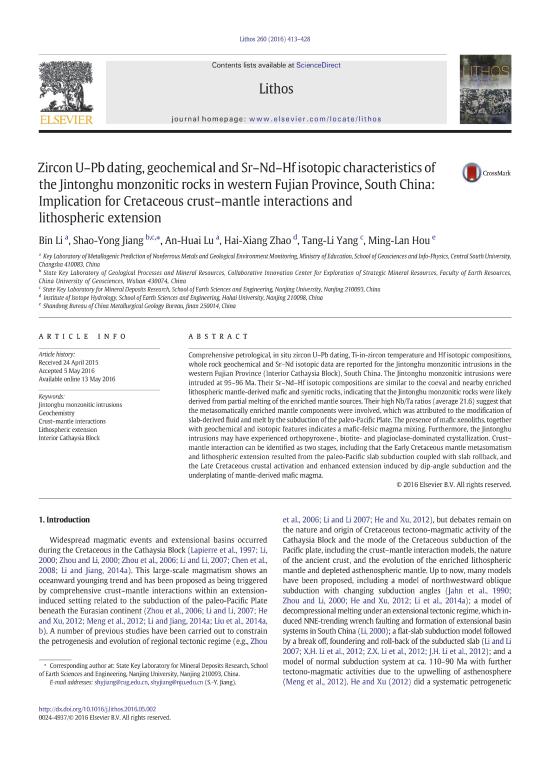

Bin Lia, Zircon U–Pb dating, geochemical and Sr–Nd–Hf isotopic characteristics of the Jintonghu monzonitic rocks in western Fujian Province, South China: Implication for Cretaceous crust–mantle interactions and lithospheric extension
Comprehensive petrological, in situ zircon U–Pb dating, Ti-in-zircon temperature and Hf isotopic compositions, whole rock geochemical and Sr–Nd isotopic data are reported for the Jintonghu monzonitic intrusions in the western Fujian Province (Interior Cathaysia Block), South China. The Jintonghu monzonitic intrusions were intruded at 95–96 Ma. Their Sr–Nd–Hf isotopic compositions are similar to the coeval and nearby enriched lithospheric mantle-derived mafic and syenitic rocks, indicating that the Jintonghu monzonitic rocks were likely derived from partial melting of the enriched mantle sources. Their high Nb/Ta ratios (average 21.6) suggest that the metasomatically enriched mantle components were involved, which was attributed to the modification of slab-derived fluid and melt by the subduction of the paleo-Pacific Plate. The presence of mafic xenoliths, together with geochemical and isotopic features indicates a mafic-felsic magma mixing. Furthermore, the Jintonghu intrusions may have experienced orthopyroxene-, biotite- and plagioclase-dominated crystallization. Crust– mantle interaction can be identified as two stages, including that the Early Cretaceous mantle metasomatism and lithospheric extension resulted from the paleo-Pacific slab subduction coupled with slab rollback, and the Late Cretaceous crustal activation and enhanced extension induced by dip-angle subduction and the underplating of mantle-derived mafic magma.
